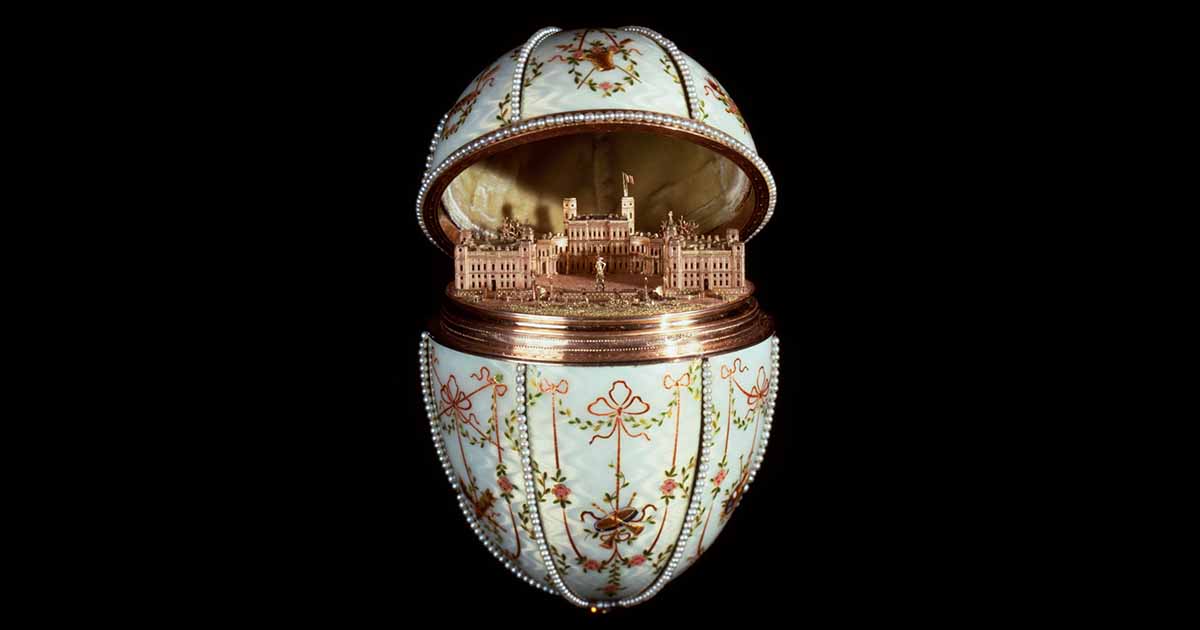Fabergé Eggs Were Opulent Easter Gifts Created for Russian Royalty
Almost everyone has heard about Fabergé eggs, thanks to their making headlines as they fetch exorbitant prices at auction. In one case, in 2007, the famed Rothschild Clock Egg was sold by Christie’s for almost £9 million to a mystery bidder. Nevertheless, few know the history of these extravagant artifacts, besides having some inkling that they are in some way related to the Russian monarchy.
The fascinating journey of these opulent creations began in 1885 when Tsar Alexander III commissioned the renowned jeweler Peter Carl Fabergé to create an exceptional Easter gift for his wife, Empress Maria Feodorovna.
Born from the hands of skilled artisans, each Fabergé egg is a miniature marvel of craftsmanship. The inaugural egg, known as the Hen Egg, featured a golden shell that opened to reveal a golden yolk, which, in turn, concealed a tiny hen crafted from gold and precious gems. This exquisite gift marked the inception of an extraordinary tradition that would endure for over three decades.
- Gifts Across the Ages: When Did People Start Giving Birthday Presents?
- 9 Crazy Things Ancient People Gave as Gifts

Coronation of Emperor Alexander III and Empress Maria Feodorovna. (Public domain)
A Regal Legacy Unfolds: Fabergé Eggs and the Russian Monarchy
The tradition reached its peak under the rule of Alexander III's son, Tsar Nicholas II. From 1885 to 1917, Fabergé crafted a total of 50 imperial eggs, each uniquely designed and filled with intricate surprises. These miniature treasures not only celebrated the joy of Easter but also served as a symbol of the close-knit Romanov family.
One of the most iconic eggs, the “Winter Egg” of 1913, featured a delicate miniature sleigh made from platinum, diamonds, and rock crystal, carrying a tiny diamond-set Fabergé egg. Another notable creation, the “Imperial Coronation Egg” of 1897, commemorated the coronation of Nicholas II and Alexandra Feodorovna. It boasted a translucent yellow enamel shell, revealing a delicate replica of the Imperial coach.
The tragic demise in 1917 of the Romanov dynasty—which ruled Russia for over three centuries from 1613 to 1917—marked the end of this regal tradition. When the Bolsheviks seized power during the Russian Revolution, they seized the imperial eggs, dispersing them across the globe. Many were lost, some destroyed, but others found new homes in museums and private collections.
Despite their scattered fate, Fabergé eggs continue to captivate the world with their intricate beauty and historical significance. The House of Fabergé, having left an indelible mark on the art world, remains synonymous with the pinnacle of craftsmanship and luxury.
Even today, Fabergé eggs stand as shimmering reminders of a bygone era—a time when imperial opulence and artistic brilliance converged to create treasures that transcend generations. These gilded marvels, conceived in the crucible of the Russian monarchy, remain beacons of history and opulence, showcasing a legacy that sparkles with both splendor and the poignant echoes of a vanished era.
Top image: The Gatchina Palace Fabergé Egg. Source: CC0 1.0 Universal

















